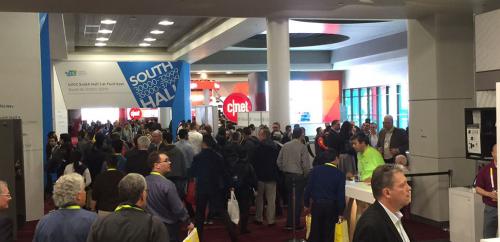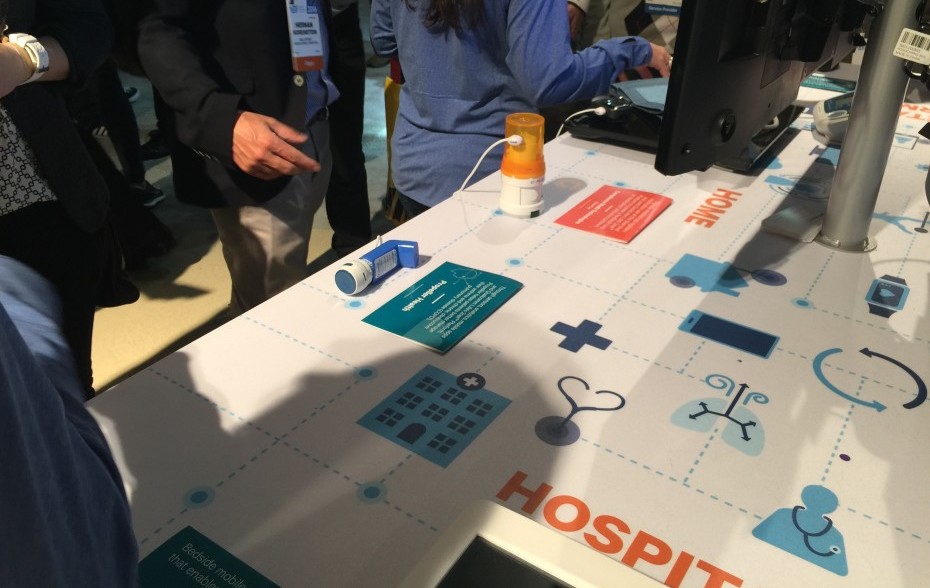With more than 170,000 attendees streaming through 3,631 exhibiting company booths that cover over 2.2 million net square feet of exhibit space at CES, you’ll have to forgive me if my brain (not to mention my feet) turn to mush within a few hours of wandering the show floor. Booths, devices, ideas all seem to blend together. Endless buzzwords and tech specs meld into indecipherable globs of marketing speech that flow in one ear and out the other. One way I keep everything straight is to play little games with myself. Today I was playing, “Can I find a booth that doesn’t feature something that qualifies as an Internet of Things object.” It’s harder than it sounds.
It should come as no surprise that practically every object on the show floor is designed to be connected to the Internet and then interact with other objects – at the very least with a smart phone. Sensors are dropping in price and wireless broadband is nearly ubiquitous. But while the costs and barriers of getting an Internet of Things device on the market have dropped dramatically, it hasn’t necessarily lead to better devices. The vast vast majority of these devices as far as I can tell really just turn each other on and off.
Most IoT devices seem to fall into one of two categories. Either they make your waking up experience better or they make your coming home experience better. They turn on lights, set alarms and reminders, turn on speakers and start coffee makers. Waking up and coming home, incidentally, are the two times you’re most likely to turn things on. I don’t qualify things connected only to a smartphone like Bluetooth speakers as IoT, nor do I count security cameras that allow you to stream live via an app. That’s just an Internet connected device. I do, however count light bulbs that interact with window blinds and thermostats that interact with door locks. And those, again, are really just objects turning other objects on and off.
This isn’t a bad thing. It is what it is. The Internet of Things is in a development and marketing phase right now where the technology has outpaced our ability to conceive of what to do with it. Not to mention the technology is still introducing itself to the general public. This phase requires a lot of slow, painstaking market research and product introduction. This is well served by creating easy to explain, easy to integrate, relatively inexpensive objects that assist with a singular problem – turning things on and off.
There are certainly exceptions. Qualcomm for example is featuring objects under the banner “Internet of Medical Things.” These are everyday medical objects like inhalers and pill bottles that interact with each other, an app, a doctor, or a pharmacist in a way far more substantial than as on-off switches. I can imagine multiple prescription bottles communicating with each other and a health bracelet like Fitbit, all together monitoring drug interactions and health specs. Very cool but still a ways away.
It’s an exciting time to be a part of the technology industry. We have an embarrassment of sensor-laden riches and not enough ideas for what to do with them. But I feel we’ve reached a place now where the only path to viability is to switch gears, moving away from “how can devices make our lives more convenient?” and instead towards “how can devices make our lives better?” I don’t have the answer, but I do know that it’s not turning things on and off. I’ve been doing that myself for quite some time and I really don’t need any more help.

